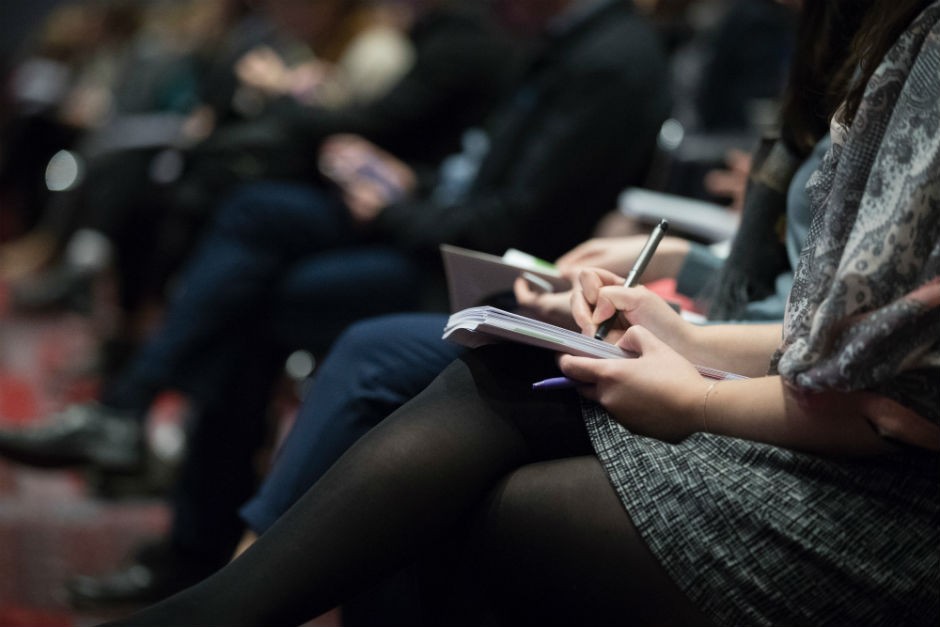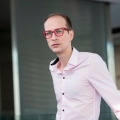Nikola Stepić works in the fields of Film Studies, English and Art History. His current research deals with the city as both a readable interface of desire and sexuality, and as a set of technologies that contribute to the formation of sexual identity. Nikola has published and presented widely on his interests in gender and sexuality studies, material cultures of masculinity, popular culture, porn studies and HIV/AIDS. His work can be read in Angelaki Journal of the Theoretical Humanities, the European Journal of American Studies, The Journal of Religion and Culture and others. An international student from Serbia, he resides in Montreal.
Blog post
Get thee to a conference!

There are few things about being a student that I like more than an academic conference. For some, these meetings are synonymous with posturing, opportunistic networking and, especially, a futile exercise in time-keeping. Meanwhile, I’ve always felt there was something grand about a couple dozen (sometimes hundred or even thousand!) experts crammed together inside a conference centre or university seminar room, creating a world-within-a-world where what they research takes precedence above all else.
Even in the digital age, or perhaps especially in the digital age, conferences are rare opportunities for colleagues to physically see each other and catch up before turning a critical eye to each other’s work, attempting over the course of a couple of days to disentangle an ever-changing set of questions and concerns.
I’ve participated at 10 academic conferences so far in different capacities, and each of them has been incredibly rewarding. So far this year, I’ve presented at the Society for Cinema and Media Studies conference in Toronto, as well as at the Theorising the Popular conference at Liverpool Hope University in England.
The former is the biggest annual meeting in North America for scholars of the moving image, with almost 1,900 participants speaking on every aspect of the field imaginable. The latter, on the other hand, is an annual conference on a smaller scale, dedicated solely to the field of popular media, and its biggest strength is that it not only reinforces the importance of studying so-called “low” culture, but also demonstrates the field’s breadth and seemingly endless opportunities.
I have also gotten an opportunity this year to act as session chair at a symposium titled Agents of Design / Design as Agency, organized at Concordia’s Department of Art History by Drs. John Potvin and Marie-Ève Marchand. The responsibility was entirely new to me and it proved especially inspiring to interact with some of the greatest theoreticians of design from all over the world.
While I have been lucky to attend some truly excellent conferences, the experience has never been the same — even when I visited the same conference for a second time, as was the case this year with Theorising the Popular. While I suppose this makes sense, given that a conference experience is in great part shaped by the randomness of its congregation, not to mention one’s own developing attitude towards a field, I can’t help but wonder: What should we expect from a conference, and how do we know that a conference has been a success?

Certainly, networking is among the top reasons to attend a conference. While some of my friends complain about the flashing of business cards and the conspiratorial tone conference chatter sometimes assumes, a conference may also provide fabulous opportunities to simply make friends.
In other words, it’s safe to say that meeting new people and touching base with those I already know is high on the list of what I look for at a conference. What I especially like to do is figure out the Twitter hashtag used by conference-goers early enough so that by the first cocktail hour I can find and introduce myself to “my people” — those who tweeted on panels or topics that I find particularly resonant (needless to say, a strategically used GIF will bump anyone up to the top of my list). You cannot imagine the excitement of finding a kindred academic soul, especially for those of us working in more marginal academic fields.
Then there’s the actual attending of the conference, which to me may be as stressful as actually presenting. Picking the right panels to go to, for example, is no small feat, especially when the conference seems scheduled with the express intent on keeping me away from the panels I find most interesting by overlapping them at every possibility.
I will not pretend that I normally have the wherewithal to plan my movements in advance; that said, I do try to make it to as many panels as possible, led by the maxim that the success of a conference directly corelates with the exchange of ideas and opportunities for learning. I also think snubbing panels other than one’s own is beyond gauche. After all, the audience plays an active role at any panel, and I have yet to see a panelist who minds being recognized after their presentation or asked to explain a finer point by a colleague interested in the topic. Creating a space for that exchange is what conferencing is all about.
And of course, there is the dreaded presentation itself. To be fair, I don’t have much to say on the topic except that I’ve gotten the best feedback when I recognized my paper as a kind of experiment, an opportunity for play in a field that I love. In that sense, being clear, approachable and humble always served me well; on the flipside, I would get in my own way by being overly confident, defensive or unwilling to simplify.
Keeping the audience interested is key, of course — and then using the Q&A as an opportunity to re-contextualize or make further connections helps even further. Overall, recognizing the strengths and limitations of a 20-minute time slot and then showing up in the most authentic, open way possible has always left me feeling good. Ultimately, by the time one hits the stage all they can do is keep calm and carry on, trusting the work and having fun sharing it.
Approachability, accountability, authenticity. These may as well be the ingredients to a successful conference experience, or maybe they’ve just worked for me (they also may be words I’ve once seen printed in cursive on a pillow case; I see this as proof of their legitimacy).
Perhaps the key may not even be found at the conference proper, but in the comedown period afterwards, when notes and contacts are revisited, and old information starts to look new again. If endless reading and typing threatens to turn us all into islands, then maybe we ought to treat conferences as vital opportunities to connect, and where for half an hour we get to command the attention of the room and receive feedback on a topic we care about. Let’s be honest, that pretty much rocks.
About the author


